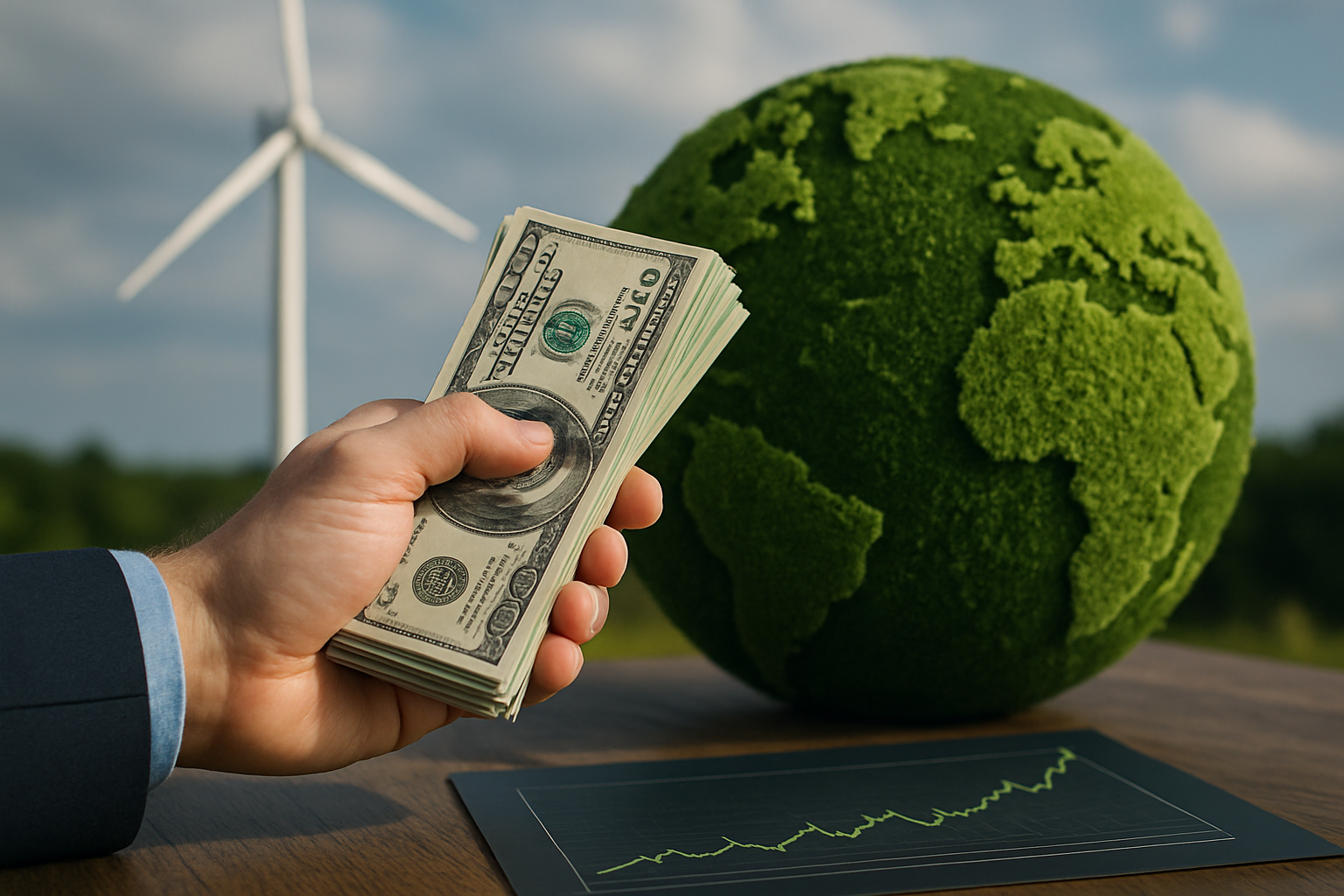The Ascent of Sustainable Bonds: Redefining Fixed Income Investing
In the ever-evolving landscape of finance, a new breed of investment vehicle is capturing the attention of both seasoned investors and environmentally conscious individuals alike. Sustainable bonds, also known as green bonds or social bonds, are emerging as a powerful tool for channeling capital towards projects that promise both financial returns and positive environmental or social impact. This innovative financial instrument is not just reshaping the fixed income market; it's redefining the very essence of responsible investing.

The Genesis of Sustainable Bonds
Sustainable bonds trace their origins to the early 2000s when the concept of using debt markets to fund environmentally friendly projects first gained traction. The European Investment Bank issued the first Climate Awareness Bond in 2007, marking the birth of the green bond market. Since then, the sustainable bond market has expanded rapidly, encompassing not only environmental projects but also social initiatives and sustainability-linked bonds.
The World Bank played a pivotal role in popularizing green bonds, issuing its first such bond in 2008. This move helped establish a framework for how green bonds should be structured and reported, paving the way for wider adoption. As awareness of climate change and social issues grew, so did investor demand for financial products that could address these challenges while providing returns.
Understanding Sustainable Bond Types
Sustainable bonds come in several flavors, each with its unique focus:
-
Green Bonds: These finance projects with environmental benefits, such as renewable energy, energy efficiency, and clean transportation.
-
Social Bonds: Aimed at funding projects with positive social outcomes, like affordable housing, access to education, and healthcare improvements.
-
Sustainability Bonds: Combine elements of both green and social bonds, funding projects with both environmental and social benefits.
-
Sustainability-Linked Bonds: Unlike the others, these bonds are not project-specific but tie the issuer’s cost of capital to achieving predetermined sustainability targets.
The Mechanics of Sustainable Bonds
At their core, sustainable bonds function similarly to traditional bonds. Issuers raise capital from investors and promise to repay the principal with interest over a specified period. The key difference lies in how the funds are used and reported.
Issuers of sustainable bonds commit to using the proceeds for specific environmental or social projects. They must provide detailed reporting on how the funds are allocated and the impact of the funded projects. This transparency allows investors to track the real-world outcomes of their investments.
Many sustainable bonds follow guidelines set by organizations like the International Capital Market Association (ICMA), which has established principles for green, social, and sustainability bonds. These principles ensure consistency and credibility in the market.
The Growing Appeal of Sustainable Bonds
The sustainable bond market has experienced explosive growth in recent years. According to the Climate Bonds Initiative, global green bond issuance reached $269.5 billion in 2020, a tenfold increase from 2015. This growth is driven by several factors:
-
Increased environmental and social awareness among investors
-
Regulatory pressure on companies to address sustainability issues
-
The need for massive capital to fund the transition to a low-carbon economy
-
Growing evidence that sustainable investments can offer competitive returns
Institutional investors, including pension funds and asset managers, are increasingly incorporating sustainable bonds into their portfolios. This shift is not just about aligning with values; it’s also about managing long-term risks associated with climate change and social instability.
Challenges and Opportunities in the Sustainable Bond Market
While the sustainable bond market offers immense potential, it also faces challenges:
-
Greenwashing concerns: As the market grows, there’s a risk of issuers making exaggerated or false claims about the sustainability of their bonds.
-
Standardization: Despite efforts by organizations like ICMA, there’s still a need for more standardized definitions and reporting frameworks.
-
Impact measurement: Quantifying the environmental or social impact of projects funded by sustainable bonds can be complex and subjective.
-
Market liquidity: As a relatively new asset class, sustainable bonds may have lower liquidity compared to traditional bonds.
Despite these challenges, the opportunities in the sustainable bond market are significant. Investors can potentially achieve competitive returns while contributing to positive environmental and social outcomes. For issuers, sustainable bonds offer a way to diversify their investor base and demonstrate commitment to sustainability goals.
Key Considerations for Investors
-
Conduct thorough due diligence on the issuer’s sustainability credentials and the specific use of proceeds
-
Look for bonds that adhere to recognized standards, such as the ICMA Principles
-
Consider the bond’s financial characteristics alongside its sustainability features
-
Evaluate the issuer’s reporting and transparency commitments
-
Assess the potential impact of regulatory changes on the sustainable bond market
As we look to the future, the sustainable bond market is poised for continued growth and innovation. New types of bonds, such as blue bonds for ocean conservation and transition bonds for industries shifting towards sustainability, are emerging. Technological advancements, including blockchain, may enhance transparency and impact tracking in the sustainable bond market.
The rise of sustainable bonds represents more than just a new investment trend; it signifies a fundamental shift in how we approach finance and its role in addressing global challenges. As investors increasingly seek to make a positive impact with their capital, sustainable bonds offer a compelling avenue to align financial goals with environmental and social responsibility. The ascent of sustainable bonds is not just redefining fixed income investing; it’s reshaping the very fabric of our financial systems for a more sustainable future.





